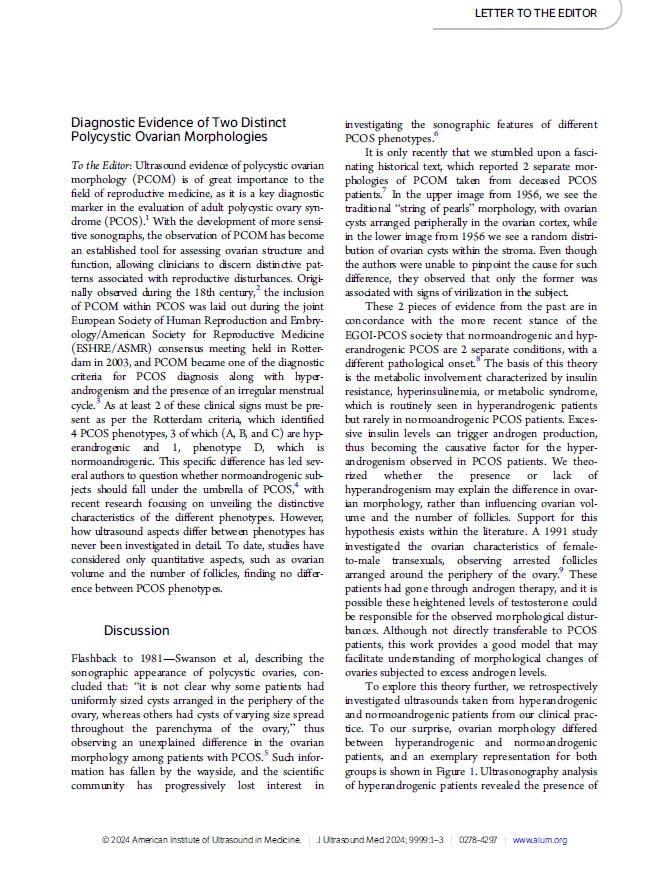Authors:
Giuseppina Porcaro, Ilenia Mappa, Marco Calcagno, Cesare Aragona, Gabriele Bilotta, Maria Salomè Bezerra Espinola, Giuseppe Rizzo
To the Editor: Ultrasound evidence of polycystic ovarian morphology (PCOM) is of great importance to the field of reproductive medicine, as it is a key diagnostic marker in the evaluation of adult polycystic ovary syndrome (PCOS).1 With the development of more sensitive sonographs, the observation of PCOM has become an established tool for assessing ovarian structure and function, allowing clinicians to discern distinctive patterns associated with reproductive disturbances. Originally observed during the 18th century,2 the inclusion of PCOM within PCOS was laid out during the joint European Society of Human Reproduction and Embryology/ American Society for Reproductive Medicine (ESHRE/ASMR) consensus meeting held in Rotterdam in 2003, and PCOM became one of the diagnostic criteria for PCOS diagnosis along with hyperandrogenism and the presence of an irregular menstrual cycle.3 As at least 2 of these clinical signs must be present as per the Rotterdam criteria, which identified 4 PCOS phenotypes, 3 of which (A, B, and C) are hyperandrogenic and 1, phenotype D, which is normoandrogenic. This specific difference has led several authors to question whether normoandrogenic subjects should fall under the umbrella of PCOS,4 with recent research focusing on unveiling the distinctive characteristics of the different phenotypes. However, how ultrasound aspects differ between phenotypes has never been investigated in detail. To date, studies have considered only quantitative aspects, such as ovarian volume and the number of follicles, finding no difference between PCOS phenotypes.

